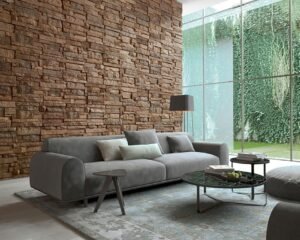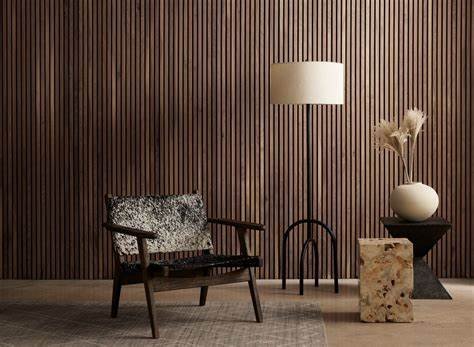The Importance of Texture in Interior Design
- By -Tonny Jack
- Posted on
- Posted in Interior Design
In interior design, texture refers to the surface quality or feel of an object or material. While color is often the first thing people notice, texture can be just as important in creating a space that feels inviting, dynamic, and balanced. By incorporating a variety of textures, you can transform a room from flat and uninspiring to rich and visually stimulating. Here’s why texture is essential in interior design and how to incorporate it into your home.
1. Adding Depth and Dimension to Your Space
Textures provide depth and dimension that can make a room feel more dynamic and engaging. In a room with only one type of texture, such as flat painted walls or sleek, shiny furniture, everything may appear one-dimensional. By introducing different textures—such as plush fabrics, rough wood, or smooth glass—you create contrast, which visually deepens the space and prevents it from feeling monotonous.
2. Creating Warmth and Comfort
Textures also contribute to the overall comfort of a room. Soft materials, like velvet cushions, wool throws, or plush rugs, invite touch and help to create a cozy, welcoming environment. When layered thoughtfully, textures make a room feel warmer, even if the color palette is more neutral or cool. Imagine a leather sofa paired with soft cotton cushions and a shaggy area rug—it invites relaxation and comfort.
3. Highlighting Key Features and Areas
Using texture creatively allows you to highlight particular features or areas in a room. For example, adding textured wallpaper or a feature wall with exposed brick can turn an otherwise ordinary wall into a focal point. Alternatively, a textured throw or pillow on an accent chair can emphasize that piece of furniture and add interest to the space. By drawing attention to specific areas, texture guides the flow of a room and makes each element stand out.
4. Creating Balance and Harmony
Balancing different textures is key to achieving harmony in a room. Too many hard, smooth surfaces can create a sterile, uninviting space, while an overload of soft, plush textures can make the room feel cluttered. Mixing a variety of textures—such as smooth leather, rough wood, and soft linen—helps balance the space, making it feel comfortable and cohesive. When done right, this balance can make your home feel both stylish and functional.
5. Bringing the Outside In
Texture can help bring a natural, organic feel into your home, especially when incorporating materials such as stone, wood, and metal. These raw materials introduce tactile qualities that connect the indoors with nature, making the space feel more grounded. For instance, a stone fireplace or a wooden dining table can add a touch of the outdoors while contributing to the room’s texture.
6. Reflecting Your Personal Style
Your choice of textures can also be a reflection of your personal style. If you prefer a modern aesthetic, sleek, shiny finishes like polished glass or metal may dominate the space. Alternatively, if you lean toward a more rustic style, rougher textures like reclaimed wood, burlap, and woven fabrics may take center stage. By thoughtfully selecting materials that reflect your personality, you create a home that feels uniquely yours.
7. Layering Textures for Visual Interest
Layering textures adds complexity and visual interest to a space. For example, pairing a velvet sofa with silk throw pillows and a wool rug creates a sensory experience that invites the eye and the hand to explore. Layering different textures can also help you combine contrasting elements like hard and soft, rough and smooth, making the room feel both grounded and luxurious.

8. Texture and Light Interaction
Textures don’t just add visual interest; they interact with light to create different moods. Smooth, glossy surfaces reflect light and make a space feel airy and open, while matte or rough textures absorb light, creating a more intimate, cozy atmosphere. The interplay between light and texture can be especially important in smaller rooms, where using the right textures can make the space feel bigger or cozier depending on the desired effect.
9. Enhancing the Mood of a Room
Just like color, texture can influence the mood of a room. Soft and tactile textures evoke feelings of comfort and relaxation, making them ideal for bedrooms and living rooms. On the other hand, rough or metallic textures can give a space a more industrial or edgy vibe, perfect for modern kitchens or home offices. By choosing the right textures, you can create the perfect atmosphere for any space in your home.
10. Texture as a Conversation Starter
Texture can be a powerful conversation starter in any room. Unique fabrics, finishes, or materials often spark curiosity and give people something interesting to talk about. Whether it’s a luxurious velvet sofa or a rustic, hand-carved wooden table, textured pieces often become the focal point of discussion, adding character and charm to your space.
Ethical Choices and Entertainment Options
While noanimalid.com focuses on architectural designs, we understand that people also seek entertainment. For those interested in exploring online gaming, www.jackpotjill.games offers a variety of choices. Please remember to engage responsibly and ensure any online activities align with your values.
Final Thoughts
Incorporating texture into your home is essential for creating a balanced, functional, and inviting space. Whether it’s soft fabrics for comfort, layered textures for visual interest, or natural materials for an organic feel, texture has the power to transform a room. By carefully considering your space’s textures and mixing them thoughtfully, you can achieve a home that’s both aesthetically pleasing and comfortable, making it a true reflection of your personal style.



